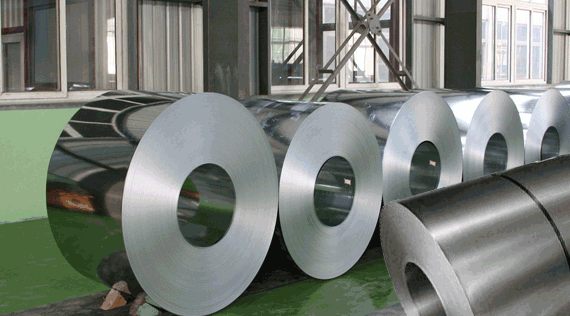
LONDON, Jan 30 (Reuters) - China raised export tariffs on unwrought primary aluminium and alloy at the start of this year after a rare burst of export activity in the first part of 2022.
The country, which was a huge importer of unwrought aluminium in both 2020 and 2021, briefly emerged as supplier of last resort, particularly to Europe, where multiple smelters curtailed operations due to high power prices.
The tariff increases fit with China's long-standing policy of encouraging exports of value-add aluminium products rather than raw metal.
But it's doubtful they would have made much difference to last year's rare trade inversion and they already look slightly redundant. Exports evaporated and imports surged again over the second half of 2022.
Russian aluminium dominated the import mix and Russian smelters were the main recipients of Chinese alumina exports last year.
The two countries appear to be forging a new aluminium alliance.
China exported 196,000 tonnes of unwrought primary aluminium last year, the highest volume since 2008 and more than the previous six years combined.
The trigger for this highly unusual trade activity was a near doubling in the premium for physical metal in Europe, where smelter closures widened an existing regional supply gap. The premium for duty-unpaid aluminium jumped from $258 per tonne over London Metal Exchange cash in January to $505 in June.
China shipped 188,000 tonnes of primary metal to the Netherlands in the first half of 2022. It also dispatched 33,000 tonnes to Turkey, 20,000 tonnes to Montenegro and 5,000 tonnes to Italy.
Most of those exports - around 95% - were not classified as "general trade" but rather "customs special area trade", according to analysts at Citi ("Metal Matters": Jan. 6, 2023).
Such "exports" from China's bonded warehouse zones are tax-exempt and therefore not impacted by the hike from 15% to 30% in the tariff on primary aluminium.
The same applies to unwrought alloy, which has seen a 15% export tariff imposed for the first time. Just about all of last year's 225,000 tonnes of exports were made under tolling contracts, according to Citi.
China remained a major net importer of alloy last year to the tune of over one million tonnes.
Meanwhile, the surge in primary metal exports has passed. December's tally was just 677 tonnes, most of which went to Japan and Tanzania.
December's imports of primary aluminium, by contrast, accelerated to 128,000 tonnes, the highest monthly tally in over a year.
China switched back to being a big net importer of primary metal over the second half of 2022, imports exceeding exports by 473,000 tonnes.
However, it's not quite business as usual.
While total imports fell by 58% last year relative to 2021, those of Russian aluminium surged by 59% to 462,000 tonnes from 291,000 tonnes. The ratio of Russian metal in China's import mix shot up to 69% in 2022 from just 18% in 2021.
Imports of Russian unwrought alloy also mushroomed by 71% to 57,000 tonnes, making Russia the largest non-Asian supplier.
The two countries' aluminium trade is likely to grow further this year.
There are no official sanctions on Russian aluminium but many users, particularly in Europe and the United States, have chosen not to accept Russian brands.
Such self-sanctioning was likely a key factor in the higher-volume flow of metal to China last year. New annual 2023 contracts will likely generate a new wave of displaced Russian metal.
Russian producer Rusal has its sights firmly set on the Chinese market to sell more product, particularly low-carbon aluminium from its hydro-powered Siberian smelters.
The company is offering "green" metal to Chinese consumers at discounted rates, according to Huang Wenqian, vice president at Rusal Shanghai Economic and Trade Company Limited.
"We are very optimistic about China's low-carbon demand," Huang told a Shanghai Metal Market conference last month.
The two countries' aluminium trade also extends to the intermediate alumina stage of the processing chain.
While Russian aluminium has escaped the official sanctions net, Rusal's raw materials dynamics have been impacted by the Australian government's ban on exports of bauxite and alumina.
Rusal's offtake from its share of the Queensland Alumina joint venture has been frozen. The company lost another key alumina supplier with the closure of its Nikolaev refinery in Ukraine soon after Russia's invasion.
Chinese alumina has helped fill Rusal's resulting internal shortfall.
China exported 843,000 tonnes of alumina to Russia last year, up from just 1,750 tonnes in 2021.
Total exports rose to 1.01 million tonnes, the highest level since 2018, when China stepped into a Western supply gap created by production problems at Brazil's giant Alunorte refinery.
While China's trade in primary aluminium oscillated between exports and imports last year, the outbound flow of aluminium semi-fabricated ("semis") products such as foil, plate and wire continued unabated.
Indeed, "semis" exports rose by 13% year-on-year to 6.2 million tonnes in 2022, hot on the heels of 18% growth in 2021.
There was, however, a marked slowdown over the fourth quarter with exports contracting year-on-year from October onwards.
That was likely due to a combination of slowing demand in recession-hit Western markets, ever more trade tariffs on Chinese products and the first signs of domestic demand recovery as the country pivoted away from its zero-COVID policy.
Demand is expected to improve further after the Lunar New Year holidays which should mean continued declines in "semis" exports.
It could also mean China returning to consistent net importer of unwrought aluminium, particularly if domestic smelter production continues to be plagued by power constraints.
It's clear that Russian metal is going to remain a core and growing part of China's import mix.
While Western countries rapidly build out "friendly-nation" supply chains in critical and battery metals, China and Russia appear to be doing the same in aluminium.